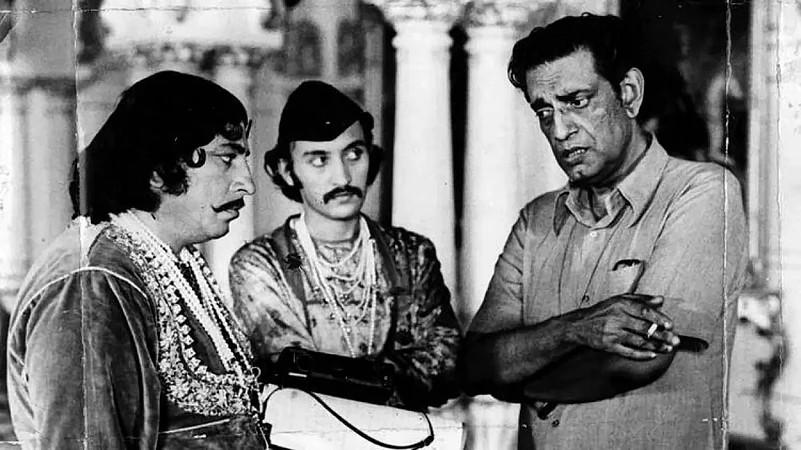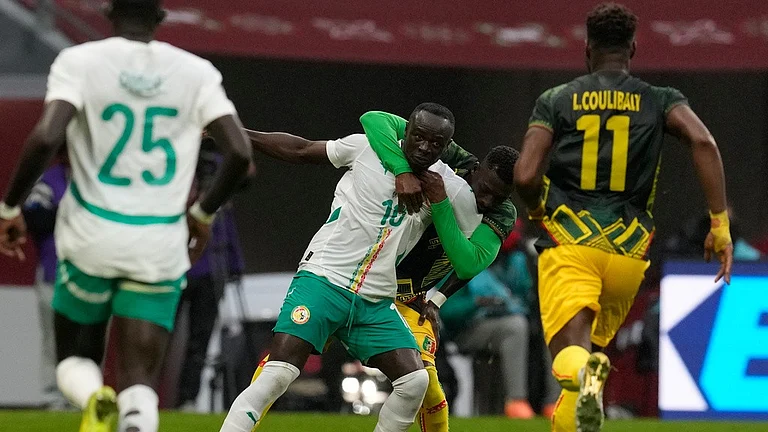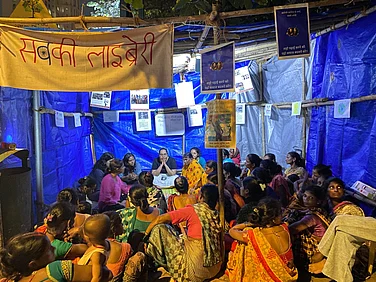In the 1957 black & white film Ab Dilli Door Nahi, there was a character called Lachhu, a tubby young boy in his early teens who, along with a bunch of other underprivileged boys, lived in a cow shed in Daryagunj, Delhi. A few years later, the young actor who played Lachhu emerged as a competent theatre actor but with nothing much to show in cinema. And eventually, he got a break as an actor in the 1973 war film Hindustan ki Kasam. So, the credits in Sholay that said ‘Introducing – Amjad Khan’ were incorrect. Hindustan ki Kasam, not Sholay, was Amjad Khan’s first credited appearance in a grown-up role.
On Amjad Khan’s 31st anniversary of passing, let us step around that urn of embers called Sholay that set Amjad’s career aglow and explore the shadow years before Gabbar Singh happened. Coming as it did after years of waiting, Amjad’s break in Chetan Anand’s Hindustan ki Kasam may have come about because Amjad’s father Jayant had acted in Chetan Anand’s earlier film Haqeeqat (1964). Interestingly, Amjad’s name in Hindustan ki Kasam was Amjad Qadalbash, a Squadron Leader of the Pakistani Air Force whose girlfriend was an Indian spy. The role had the potential for a memorable foreign villain but the character of Qadalbash was not fleshed out well enough. And Hindustan ki Kasam failed to do well, denying Amjad a strong launch. Curiously, his brother Imtiaz Khan had better luck that year playing the villain Shakaal’s brash son Rupesh in the superhit Yaadon ki Baaraat (1973).
The point where an individual’s hard work intersects with an opportunity is often unkindly referred to as ‘luck’. Amjad Khan bagging the role of Gabbar Singh was no fluke. In 1963, at the annual youth festival at the Tal Kaotra Gardens in Delhi, Javed Akhtar had seen Amjad perform in a play called Ae Mere Watan Ke Logon in which Amjad had played the role of an army officer. A few years later Ramesh Sippy saw Amjad perform in a play in Mumbai called To This Night a Dream in which Sippy’s sister Soni played Amjad’s mother. So, young Amjad had been sowing the seeds for ten years through sheer hard work.
And then came the opportunity. Danny Denzongpa, the original choice of Gabbar Singh backed out of the project as he had a clashing shooting schedule in Afghanistan. And panic set in in the Sholay camp because the shooting was to begin in a month’s time. Various alternates including Ranjeet, Prem Chopra, and Premnath were discussed. Said Ranjeet in an interview, “I was shooting in Bangalore for a film with S. Ramanathan when they approached me for the Gabbar role. Ethically I did not sign the film because Danny is a good friend of mine. I told them that I would sign it if they got me a no-objection certificate”. And that certificate didn’t materialise. One day, writer Salim Khan ran into Amjad Khan at Bandra Bandstand. More importantly, Salim Khan remembered Amjad from the latter’s theatre day. Salim asked Amjad to meet Director Ramesh Sippy.
It was a rather queer audition that Ramesh Sippy conducted of his prospective Gabbar. As Anupama Chopra narrates in her book on the making of Sholay: ‘Amjad Khan filled the doorway. He was not a particularly large man, but his lumbering gait, thickset face and curly hair gave him the appearance of one. Ramesh was lying on the diwan with his back to the door. He craned his neck right and up for a look. From the low angle, Amjad loomed larger. Something clicked. Sippy found Amjad’s face an interesting one and felt positive. It would turn out to be the best decision Sippy would ever make in his career.
What else was happening in Amjad Khan’s life apart from Sholay? On the personal front, the day it was confirmed that he would play Gabbar, his wife gave birth to their son Shadaab. The day was September 20, 1973. Also, on March 26, 1975, when Sholay was in its post-production phase, legendary filmmaker Satyajit Ray wrote a letter to Producer Suresh Jindal stating that he was keen to start on the screenplay of Shatranj Ke Khiladi sometime around mid-August. Sholay was released on August 15, 1975. By the time shooting of Shatranj Ke Khiladi began in October 1976, Amjad Khan had become a saleable star. Moreover, Suresh Jindal observed an uncanny similarity between Amjad Khan and Nawab Wajid Ali Shah in Nawab’s portrait. So, fate had decreed that like a paraglider floating seemingly aimlessly and landing at a pre-determined slot, the role of the weakling Nawab Wajid Ali Shah in Shatranj Ke Khiladi would settle with Amjad Khan.
So, within two years, Amjad Khan had gone from someone unrecognisable even at a crowded Bandra Bandstand to playing Gabbar Singh and then acting in a Satyajit Ray film. And from there his career went only one way – up.
(Balaji Vittal is a national award and MAMI-winning writer whose 5th book Pure Evil released last year. He can be found on Twitter: @vittalbalaj)


























